June 6, 2008
I lost myself for two hours yesterday, though I knew where I was at all times. In fact, it would be difficult to actually lose one’s way along Sourdough Trail. Within the area I frequent, which extends a little beyond the section known as Gardner Park, there’s only one side trail to speak of (deer trails abound, however, and are especially handy when the main path is under water). I was surprised at just how small my patch appears in a satellite view:
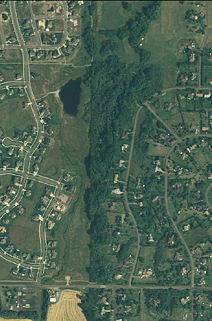
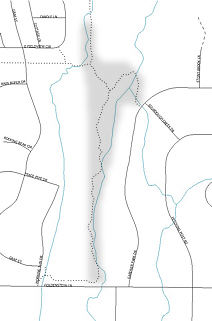
Since you can’t see the trails or even the stream from above, I’ve added a simplified map that shows my project area in gray. Finally, as graphical pièce de résistance, the same Gallatin County mapping service allows one to display the various legal and administrative features not necessarily visible on the ground. I’m beginning to wonder why I don’t feel claustrophobic out there! But the fact of the matter is that, thanks to the water provided by the creek, the vegetation is dense enough that one is seldom aware of anything outside the woods. For better or worse, my attention is almost entirely directed inward.
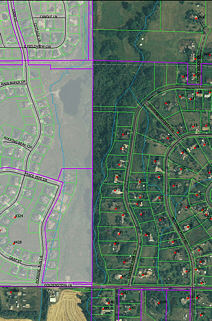
Filed in: Musings
Comments closed
June 3, 2008
A surface such as water (or glass) provides a natural way to create a layered image. The partial reflection allows superposition of images from different sources, not otherwise achievable in camera. But why care about layers? In my last post I gave them credit for a “dreamy” or “contemplative” way to show more than one scene in a single image. But that’s not pushing it very far. What might be the significance of layering?
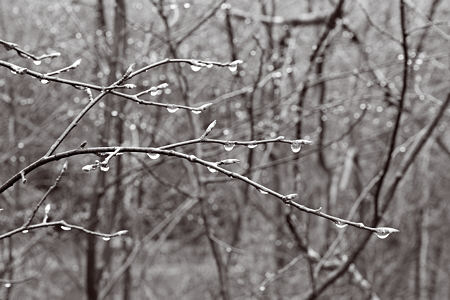
Any visual scene has multiple associations and interpretations, even for a single person. Multiple layers in an image can suggest this. They may also stimulate further reflection, prompted rather than inhibited by their indistinctness. The visual layering stands as analogy to the overlay of memories that might be connected, directly or indirectly, to a place.
The notion of layering is one I’ve come to recognize in quite a few of my images. It seems to apply when there are clearly separable zones of distance, and an obstruction of a back layer by a forward layer is prominent, forcing recognition of the zones. Zones may be distinguished also by focus. By way of experiment, the two images below of new aspen leaves have focus on the middle and forward layers, respectively, of an essentially three-layer scene.
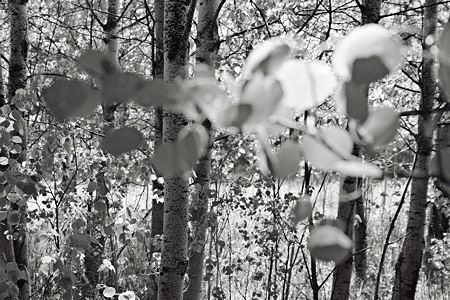
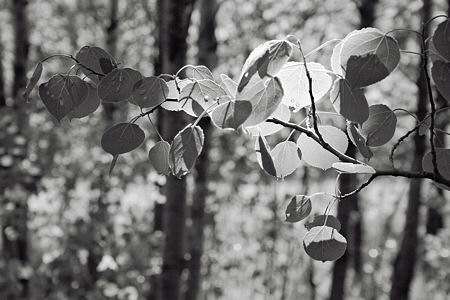
I like both images. The first seems less conventional, with the blurred leaves literally in your face (imagining yourself at the camera position). The second may be more satisfying because it emphasizes the delicate detail in the “default” subject identified by its bright lighting, and softens out the messy detail elsewhere.
This type of layering can also function to convey multiple meanings. For example, here’s an idyllic opening in the woods, and you yourself are observing from back among the trees, perhaps even hiding yourself, perhaps waiting for …
Filed in: Experiments,Musings
Comments closed





